Ryan Hall's Blog, page 225
August 18, 2016
Do Something Epic: Test Your Limits with an Unsupported Adventure Run

Running across the Grand Canyon and back is one of the classic bucket list runs among trail runners, but there are many more places to develop self-supported adventure-oriented runs. Photo: Brian Metzler
In 2011, after running dozens of marathons, then 49-year-old Lisa Fichman decided to try a new goal: an unsupported 46-mile run with friends across the Grand Canyon and back, commonly known as Rim to Rim to Rim (or R2R2R). She liked it so much that in 2013, she took on a 24-mile route through Bryce Canyon, and she’s open to doing more runs like these in the future.
Fichman is in good company when it comes to attempting “personal epics,” these days—unofficial, unsupported runs, often of great distances. A quick search through any trail running site will display plenty of interest in these journeys. They offer no recognition or finisher’s medal, no aid stations, no 26.2 sticker to serve as bragging rights. So what makes them so appealing?
“It’s mostly about testing yourself in an uncontrolled environment,” Fichman says. “When you do a race, there’s a safety net in all the support you have. When you run a big, unsupported run, there’s nothing to count on. You have to be ready for anything.”
She discovered just that when she became separated from her running partner during their Bryce run. “I made a wrong turn and had to determine if I should continue on into unknown territory or choose the safe route and take one of the upcoming access trails out of the canyon,” she explains. “I decided to continue on and everything turned out fine.”
The scary incident, Fichman says, was an important one for her. “My wrong turn gave me the chance to test myself like I never had before,” she says. “It was the most important moment in all my runs like this.”
Unlike Fichman, 45-year-old Ben Krensky never intended to run his own ultra, but that’s just what he did recently after a scheduling conflict prevented him from making it to a 100-miler for which he was registered. “I decided not to let all that training go to waste,” he explains.
That thinking gave birth to a 100-mile solo effort down the C&O Canal from Maryland to Washington, D.C. While he brought along enough food and water to run the entire length without any assistance, his parents surprised him several times along the way with treats. “My mom was worrying about me,” he admits. “While I hadn’t counted on any support, I was grateful that she showed up.”
RELATED: Epic Adventure: Running Colorado’s Four Pass Loop
Krensky finished 20-some hours after starting, having company for a mere seven miles when his teenage daughter jumped in to join him.
Portland couple Erin and Brian Wiesenauer also stumbled onto their personal epics, but took theirs further afield to Europe to run the Tour de Mont Blanc (TMB). “We originally planned to hike the 105-mile route in the typical 10 to 12 days but we had limited time, so we decided to run/fast pack it,” says Erin. “We covered it in five days, averaging 21 miles per day.”
The two took advantage of an extensive trail hut system for refueling and shelter at night. “This made it a little easier for us because we didn’t have to carry the weight of a tent, plus sleeping bag and five days of food,” Erin explains. “In total, I carried about 12 pounds of gear and water.”
Everything clicked throughout the run, with no mishaps, and Erin says her only regret was not having more time to spend in the region. They encountered a few others along the way but had plenty of time on their own—something they would never have had were they running an organized race or event. “The best part was running/hiking for 12 hours a day with my best friend on delicious single track trails, with big skies and gigantic Alps at every angle,” she says. “I wouldn’t do it any differently.”
RELATED: A Runner’s Guide to Conquering the Grand Canyon
Going for it
Organizing a personal epic, thanks to ready information a click away, is only limited by your imagination. Routes, tips and more can be found on any number of sites dedicated to hikes and runs in any region of the world. Still, it pays to lay down some ground work before actually setting off. (See “Planning Your Own Adventure” below.)
Fichman says the night before her run in Bryce, she and her running partner scoped out the trails with a short walk and also studied the trail maps. “We set off at four in the morning, so it was dark,” she says. “We also packed as much water as we could carry and brought along substantial food. Runners’ food doesn’t cut it on these adventures.”
She also recommends keeping moving as much as possible, even when tired and wanting a rest. “We probably stopped and rested too much during R2R2R,” she says, “but Bryce went smoothly because we kept forward progress.”
The reward for all the effort? A combination of things, Fichman says. “The views were spectacular,” she says, “and conquering your fears is empowering.”
RELATED: Running Across Oregon in Record Time
If the idea of a personal epic run appeals to you, know that while the national parks can afford amazing experiences, the National Park Service isn’t necessarily a big fan.
“Right alongside the enjoyment priority is health and safety—of visitor and park staff—and preservation of the resources and values for which a park has been added to the system,” says NPS spokesperson Jeffrey Olson. “People who want to test themselves with a run in a wild place like a national park should contact the park in advance, ask about any necessary permits and discuss their proposed run with park staff.”
Running the 44- to 46-mile R2R2R is no small task, which is why Fichman says rangers at the Grand Canyon visitor center discouraged runners from undertaking R2R2R when she was there.
“That did make me nervous,” she admits, “but the sense of accomplishment makes it all worthwhile.”
However, a throughly trained runner who carries proper gear, fuel and hydration can create a once-in-a-lifetime adventure.
RELATED: Epic Adventure: Running Colorado’s ‘Softrock’ 100
PHOTOS: Epic Adventure: Tackling the Challenge of Running the Grand Canyon Rim-to-Rim-to-Rim
Planning Your Own Adventure
If you’re ready to stake out on your own big running adventure, a few pieces of advice from veterans can go a long way:
Check into web sites like The Trail Run Project, Fastest Known Time, and iRunFar for route information, forums, and tips.
Pack more food and water than you think you need—anything can happen and having a little extra in case your run takes longer than expected could be a literal lifesaver.
Study your maps and plan your route well—don’t leave anything to guess when you may be facing countless hours on your feet.
Know that trail markers may be missing, especially in more remote areas of parks or trails.
Be courteous, especially in the national parks, to other users and rangers alike.
The post Do Something Epic: Test Your Limits with an Unsupported Adventure Run appeared first on Competitor.com.
August 17, 2016
Snoop Dogg Will Headline Rock ‘n’ Roll Las Vegas Races

The 2016 Rock 'n' Roll Las Vegas Marathon weekend—which also includes a half marathon, 10K and 5K—is set for Nov. 11-13. Photo: Ryan Bethke
Need some inspiration to get your shizzie to the hizzie in your next half marathon or marathon? Well, Snoop Dogg might be able to help.
Snoop will be headlining the 2016 Rock ‘n’ Roll Las Vegas Marathon & ½ Marathon. The rap icon will perform for more than 40,000 runners on Sunday, Nov. 13, during the pre-race concert at 3 p.m. prior to the start of the marathon and half marathon.
“Snoop Dogg is an entertainer who needs no introduction,” said Josh Furlow, President of the Rock ‘n’ Roll Marathon Series. “He’s one of the all-time great performers, and we couldn’t be more excited to have him send off 40,000 runners on the Las Vegas Strip as we throw the biggest party of the year in running.”
VIDEO: Time-Lapse Video of the Rock ‘n’ Roll Las Vegas Half Marathon Finish Line
One of the most commercially successful artists in music, Snoop Dogg has been at the forefront of pop culture for more than 20 years. He’ll kick off the race day party by performing a number of his house party anthems and chart topping hits, including “Gin & Juice,” “Who Am I? (What’s My Name?),” “Beautiful,” and “Drop It Like It’s Hot.”
Not much is off-limits in Las Vegas, but running on Las Vegas Boulevard (a.k.a. “The Strip”) without traffic is limited to one night a year. You can play slots just about everywhere in Vegas and feast on fine cuisine all over town, but the only way to reach the most high-decibel, laser-infused finish line in running is by entering the Rock ‘n’ Roll Las Vegas Half Marathon, Marathon or 10K on Nov. 13.
PHOTOS: Sights and Scenery from the 2015 Rock ‘n’ Roll Las Vegas Marathon and Half Marathon
The marathon and half marathon provide epic after-dark tour of casinos, chapels, the iconic “Welcome to Las Vegas” sign and the Fountains of Bellagio, plus an amazing finish line at the foot of the Mirage volcano. (There’s also the Brooks Rock ‘n’ Roll 5K race presented by SLS Las Vegas off the Strip on the night of Nov. 12.) Runners can choose to participate in the “Remix Challenge” and earn a bonus third medal by running in both the 5K on Saturday and any distance on Sunday.
Race day on Sunday will begin with the Snoop Dogg performance at the Las Vegas Village, across from the Luxor Hotel. In addition to the headlining concert, live bands and DJs spanning all genres will play along the race courses entertaining and encouraging runners as they make their way to the finish line.
As the saying goes, what happens in Vegas stays in Vegas. But if you give this legendary race a shot, it might be the Sin City memory you’ll want to remember for years to come.
For more information or to register for Rock ‘n’ Roll Las Vegas, visit StripatNight.com.
(Editor’s note: The Rock ‘n’ Roll Marathon Series, Competitor magazine and Competitor.com are owned by The Competitor Group.)
The post Snoop Dogg Will Headline Rock ‘n’ Roll Las Vegas Races appeared first on Competitor.com.
Shoe of the Week: Altra Torin 2.5
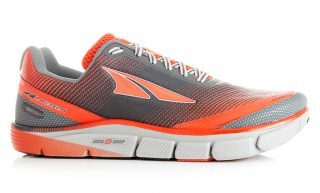
While there are plenty of shoes that offer maximal cushioning, only a few can come close to the smooth, soft and resilient ride of the Torin 2.5. Although it has plenty of cushioning underfoot, it’s a well-balanced combination of lightweight impact dampening and energetic responsiveness that defines this shoe. On one hand, it’s all about pillowy comfort, but the high cushioning doesn’t entirely mute the foot-to-ground proprioceptive feel like it does in some maximalist models. The layer of A-bound foam acts like a spring board, helping a runner’s foot carry energy into the start of the next stride. The most unique factors of this shoe are the two traits all Altra shoes are built on—a wider, foot-shaped toe box and zero-drop (or level) platform from heel to toe. Our wear-testers thought this shoe was sublime for moderate to long runs, noting the step-in feel and the energetic midsole. All testers commented on the unique shape of the shoe (and a few balked at it for aesthetic reasons), but most didn’t realize this shoe had a zero-drop platform until they were told—and knowing that information didn’t change their positive opinions of it. The latest version of the shoe has a new engineered upper that both improves the fit of the shoe but also looks sharper and more colorful than previous editions. We realize not everyone appreciates (or can tolerate running long miles with) a zero-drop platform, but this is an exceptional shoe to mix into your quiver. (For more shoes, take a look at our Fall 2016 Road Running Shoe Buyer’s Guide.)
Price: $125
Weights: 9.1 oz. (men’s), 7.5 oz. (women’s)
Heel-to-toe Offset: 0mm; 24mm (heel), 24mm (forefoot)
Info: Altrarunning.com
RELATED: Shoe of the Week—ASICS DynaFlyte
The post Shoe of the Week: Altra Torin 2.5 appeared first on Competitor.com.
Out There: Pushing to the Finish
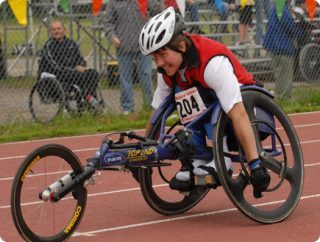
Holly Koester has finished 130 marathons since suffering a spinal cord injury in an automobile accident in 1990. Photo: Courtesy of Holly Koester
Thirty yards into the climb, it was clear I had underestimated the challenge of the hill before me.
“You make this look easier than it actually is,” I grunted to my training buddy, who seemed to coast effortlessly up the incline.
“Uphills are harder for people like you,” he replied. “Your weight will make the downhill easier.”
I think I’m offended. “Are…are you saying I’m fat?”
He rolls his eyes. “I’m saying you have legs, Susan.”
That I do. In fact, I’m the only one in this training group who has a working set. Some of my companions are amputees, while others are paralyzed as a result of birth defects or spinal cord injuries. All of us are training for a marathon.
These are the members of a training group that meets weekly in a park near my house. Our training times always seem to coincide with each other—with every lap I sprint around the park, even more wheelchairs and handcycles unload from the backs of cars and trailers. They line up in the parking lot, polishing and tuning up their rides before heading out as a group. It’s like a meeting of hot rod enthusiasts, only instead of a 420-horsepower engine, these rides are powered by biceps and grit.
At my last marathon, I shared a few miles with a set of those (very large, very strong, very impressive) biceps—a handcyclist who, after the race, invited me to say hello to the group next time I was in the park. That’s how I ended up on my back in the bike lane, pushing a handcycle’s cranks with burning arms. For three days after my handcycle 5K, I couldn’t lift my arms more than two inches away from my body. This sport is hard, y’all.
We all may be training for a marathon, but I soon realized my experience as a runner without a physical disability is vastly different from those of wheelchair and handcycle racers. The more I learned from my new training companions, the more I learned just how much I didn’t know about wheelchair racing. Things like:
It’s not as easy as it looks.
“So many people think that it is easy or even fun to use a wheelchair or handcycle,” says Wendy Griffin, 10K silver medalist at the National Veterans Wheelchair Games. After all, it’s got wheels, so it rolls. Simple enough, right?
Not quite. It takes a bit of effort to gather momentum with a push of the wheels or hand cranks, and even then, there’s a million forces working against that momentum: A wheelchair racer is fighting a constant barrage of potholes, mud, wind, inclines, chipseal and debris.
Chairs don’t easily go over curbs and bumps, and racers cannot navigate a narrow passage as easily as runners – they not only have to allow for the width of the chair, but also the movements of their arms to propel the chair.
The technology is still a work in progress.
Wheelchairs are not new, but racing wheelchairs are. Only recently has wheelchair racing achieved status as a legitimate athletic pursuit, garnering notice from engineers and manufacturers who specialize in speed. Earlier this year, automaker BMW announced it would use its speedy expertise to design racing wheelchairs for Team USA at the 2016 Paralympic Games. The final product, which you can see here in BMW’s latest TV ad, is pretty cool.
“Man, have racing chairs come a long way,” says 130-time marathon finisher Holly Koester, who was paralyzed in an automobile accident. “They started out with four wheels, then moved to three-wheel models that looked like a little wagon with a last-minute thought to add a brake. The racing wheelchair I use now is about two feet longer and more sleek.”
Something else that has changed is the racer’s hands. Up until a few years ago, athletes used a batting glove and taped their hands into a fist using athletic tape; now, new gloves replaced tape with Velcro and include thumb pads that allow the hand to strike the wheel with more power.
There’s more to monitor during training and racing.
Many paraplegic and quadriplegic athletes, who have limited or no feeling in their lower extremities, have difficulty controlling body temperature and are subject to overheating, says Griffin:
“We sometimes don’t realize we are overheating until it is too late; if we get cold, we don’t shiver like normal people to warm ourselves. We also don’t perspire in the same way and therefore have difficulty cooling an overheated body.”
It matters what you ride.
If you’re a handcyclist, expect to catch flack from a wheelchair racer; if you’re a wheelchair racer, handcyclists will likely have a name (or ten) to call you. There’s a real split in the community about allowing handcycling in marathons and road races.
You see, some wheelchair racers consider the gears of handcycles to be an insult to the integrity of racing, which should be completed solely under the power of one’s own body. But racing in a traditional wheelchair is not always an option for athletes. Take Jesse Walton, for example. After a motor vehicle accident rendered the veteran paralyzed from the chest down, Walton lost use of his abdominal muscles (a key element in one’s ability to race a wheelchair).
“It would be my preference to participate as a wheelchair athlete if I had the capabilities, and that goes for others too,” Walton says. “However, since some injuries or birth defects vary so broadly—say, higher spinal cord injuries that affect the hands or breathing, amputees, metal rods that prevent bending, or certain spina bifida—not all athletes can compete in chairs. It’s my belief that a handcycle provides an alternative for those people, but some chair competitors and other marathon traditionalists do not believe that using equipment with gears is fair.”
You can’t just enter your local 5K on a whim.
Unlike most runners, who can enter almost any race at any time, wheelchair and handcycle racers are limited to a small handful of events.
“When I was striving to complete a marathon in each of the 50 states, I was just looking for races that would allow wheelchairs,” Koester says. “It would get really frustrating in some states trying to find a wheelchair-friendly marathon.”
Once a race is identified, there are still several hurdles to clear. Many races cap the number of wheelchair athletes allowed or the type of wheelchair or handcycle used. Some place limitations on speed, restrict passing, or tell wheelchair users to yield to foot runners—which defeats the purpose of racing.
Race directors don’t always think of everything.
Even the most accommodating of races often forget to provide handicap-accessible bathrooms. (Remember that next time you complain about the conditions of your pre-race port-o-johns.)
People can be jerks.
It’s rare, but it does happen—some people are just assholes. In 2014, video footage was recorded of a volunteer telling a quadriplegic athlete in a Missouri marathon to “get up and walk.” The video was used as evidence in a lawsuit against the race, which was accused of discriminatory practices.
This is an extreme case, of course. For most wheelchair and handcycle racers, discrimination usually comes in the form of garden-variety ignorance.
“Many people usually assume handcyclists have more capabilities than they really do,” says Walton. “People always seem to be surprised that I’m completely paralyzed from the chest down and require a wheelchair—they just assume that I’m a cycling enthusiast trying a new, recumbent cycling product. The truth is, one cannot see the disabilities the cyclist has, only that they appear to be muscular and fit, so they’re easily mistaken.”
And that’s not all.
As I talked with more and more wheelchair and handcycle racers, the list of challenges got longer and longer: finding (and affording) a racing wheelchair, locating a mechanic with knowledge of handcycles, transporting a racing wheelchair or handcycle, finding safe routes for training (sidewalks have distracted pedestrians and roads have distracted drivers), getting over a soft, sandy field that separates the parking lot from the start line…it all sounds like, well, a real pain in the ass.
“I can’t imagine doing all of that just to race,” I sighed each time I heard another laundry list of challenges, realizing how much I take for granted as a runner.
“I can’t imagine not doing it,” they almost always replied. “It’s worth it.”
This is the statement that always brings me back to our common ground as athletes. I may not be able to relate to many of the challenges wheelchair and handcycle racers face, but I get why they do it anyway— a race is one day, but the effects can be felt for a lifetime. It’s worth it, indeed.
“Racing has given me independence, freedom, opportunities to travel, and the chance to set goals and achieve them,” Koester says. “It has given me the confidence to try new things. Heck, if I can push 26 miles, I can get in front of a class and teach, or be a leader in my community.”
“The coolest thing about racing is that feeling of camaraderie and accomplishment. I belong to a group. I can do things now that I used to be able to do before I was paralyzed, just in a different way,” Griffin says. “Those of us that use chairs are still very able bodied and able minded. We can do so much if given the opportunities to push ourselves to the next level.”
The post Out There: Pushing to the Finish appeared first on Competitor.com.
August 16, 2016
Bigger is Better: How a Runner Can Build a Huge Aerobic Base
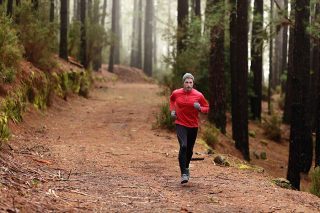
Slowly increasing your mileage—both your weekly total and the length of your once-a-week long run—will help you build your aerobic base. Photo: Shutterstock.com
For a half marathoner or marathoner, the “base phase” of training (also called the introductory or foundational training period) is the first phase of a training cycle. It’s what prepares runners for the more challenging, race-specific workouts that come later.
And the top goal of base training is to increase endurance—or a runner’s aerobic capacity.
So, how do top coaches and athletes define the base phase of training?
Brad Hudson, coach to many elites and author of Run Faster, explains the base phase as:
“Priority number one is to gradually but steadily increase your running mileage…
Other priorities of the introductory period include establishing a foundation of neuromuscular fitness with very small doses of maximal-intensity running and beginning the long process of developing efficiency and fatigue-resistance at race pace with small doses of running in the race-pace range.”
And Bob Kennedy, the former American record holder in the 5,000m, explains, “There are three basic phases to a training cycle: base, strength and speed. The problem that most athletes have is that they think [the phases] are mutually exclusive. I think that the phase of training is defined by what you are focusing on during that phase.
But you always do a little of all of those things. There’s never a time of year when you’re just running mileage or you’re just doing speed. You’re always doing all of it, it’s just a matter of to what degree.”
Any base period should include three components: gradually increasing mileage, the critical long run, and of course, at least one faster workout per week.
Higher Mileage is Key
Mileage, or the total volume of a runner’s workload, is one of the best metrics for success. Simply put, the more you’re able to run, the faster you’re likely to race.
To build a strong aerobic engine, gradually increasing mileage during the base phase of training is necessary.
Focus on three metrics:
Increasing the long run by about a mile every 1-2 weeks
Adding 1-2 more runs per week
Adding 1-3 miles to weekday runs every 1-3 weeks
The end result should be a gradual, progressive increase in mileage that will help build endurance, injury resistance and economy.
Run Long to Build Fitness
The almighty long run has become nearly synonymous with endurance. To increase stamina, increase the distance of the long run.
Why? Well, the benefits are clear:
Denser mitochondria (the “energy factories” of your cells)
Denser capillary networks to deliver oxygenated blood
Mental toughness and resolve
Improved muscular strength
Enhanced running economy (efficiency)
More energy efficient
You’ll race faster!
No base phase is complete without long runs. No matter if you’re a miler or ultramarathoner, a veteran or a total beginner, the long run is an absolutely critical component to successful training.
Keep the pace of long runs mostly easy and add about a mile every 1-2 weeks. But every 4-5 weeks, it’s wise to cut the distance back to ensure you’re recovering and not increasing your risk of running injuries.
Faster Workouts
It’s a common misconception that base training doesn’t include fast workouts. While they’re not the focus, they’re still included to maintain leg speed and neuromuscular fitness (the ability for your brain to communicate effectively with your muscles).
While strides or hill sprints are valuable ingredients in the base phase (and any phase of training!), there are other workouts that will help increase your fitness and overall endurance.
Progression runs where you gradually speed up to about tempo pace at the end of the run is a valuable early-season workout.
Tempo sessions improve your body’s tolerance to and ability to buffer lactate (the byproduct of anaerobic cellular respiration). In other words, you can hold a faster pace for longer.
Fartlek workouts include pickups or surges of a few minutes with 1-3 minutes recovery. These are usually faster than the other two workouts mentioned, so use them only every 2-3 weeks during base training.
Without including faster sessions into base training, runners won’t develop nearly as much neuromuscular fitness, improvements to running economy, and preparedness for the harder and more race-specific workouts that are undoubtedly coming during the later stages of training.
When you combine higher mileage, increasing long runs, and smart workout progressions you’ll build a monster aerobic base that will propel you to new personal bests.
* * *
About the Author:
Jason Fitzgerald is the head coach at Strength Running, one of the web’s largest coaching sites for runners. He is a 2:39 marathoner, USATF-certified coach and his passion is helping runners set monster personal bests. Follow him on Twitter @JasonFitz1 and Facebook.
The post Bigger is Better: How a Runner Can Build a Huge Aerobic Base appeared first on Competitor.com.
VIDEO: Olympic Medalist Emma Coburn Goes Trail Running

Colorado’s Emma Coburn is one of the most accomplished track athletes in the U.S., but she also loves to run on trails. The recently minted Olympic bronze medalist in the 3,000-meter steeplechase, Coburn, who hails from Crested Butte, Colo., and lives in Boulder, takes us on a tour of her favorite trails in this video from Matchstick Productions.
RELATED: Emma Coburn Wins Olympic Bronze in 3,000m Steeplechase
The post VIDEO: Olympic Medalist Emma Coburn Goes Trail Running appeared first on Competitor.com.
American Men to Watch in the Olympic Marathon
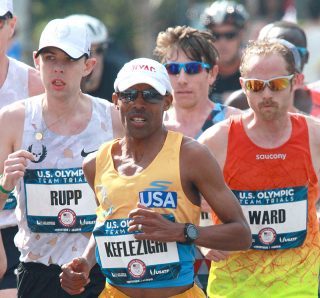
If you’ve ever run a marathon (or even a half marathon), then you will appreciate how grueling this 26.2-mile event will be in the heat and humidity of Rio. The route is the same for both men and women, starting and finishing in the long, narrow Sambódromo open-air stadium (where Carnival celebrations are held every winter) and sending runners on multiple criterium-style loops along Guanabara Bay.
RELATED: Check Out the Olympic Marathon Course via the RioRun Interactive App
Sticking with Olympic tradition, the men’s marathon is the very last event in this year’s Olympics, starting at 9:30 a.m. local time (8:30 a.m. ET on NBC and NBCOlympics.com) on Sunday, Aug. 21. The men’s race at the Olympics has been pretty fast over the past two Olympics, with the late Sammy Wanjiru (Kenya) setting the Olympic record of 2:06:32 in 2008 and Stephen Kiprotich (Uganda) winning in 2:08:01 in London four years ago.
This year Galen Rupp, Meb Keflezighi and Jared Ward will represent Team USA for the 26.2-mile event and here’s what you’ll need to know about each of them before watching it.
RELATED: How to Watch Track & Field at the Rio Olympics on TV
RELATED: Jared Ward’s Steady Approach to the Olympic Marathon
Photo Gallery
1 of {count}
Back to Start
View Larger Image
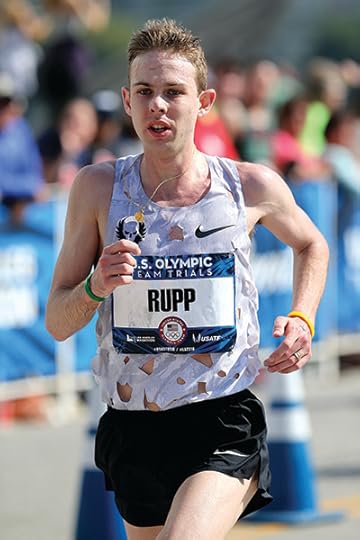
Galen Rupp
30, Portland, Ore., 2:11:13 PR
Nike Oregon Project,
Coached by Alberto Salazar
Rupp is attempting to run the rare 10,000m/marathon double in Rio. (He placed 5th in the 10,000m final.) He’s an eight-time U.S. champion and 2012 Olympic silver medalist in the 10,000, but he only has one marathon under his belt—his U.S. Olympic Trials victory in Los Angeles back in February. His lack of experience could be his biggest weakness, but then again, given his considerable skills and racing résumé, he could just be coming into his own in the marathon and might have a better chance of medaling in the longer event.
Photo: Victor Sailer/Photorun.net
View Larger Image
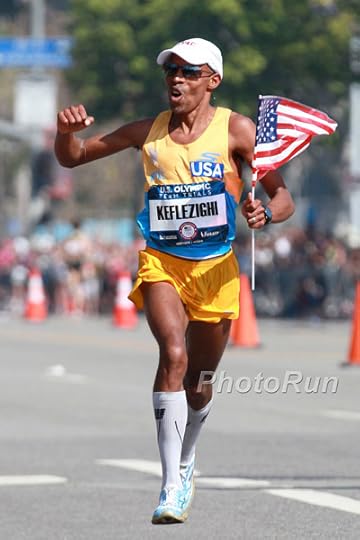
Meb Keflezighi
41, San Diego, 2:08:37 PR
Skechers Performance/New York Athletic Club,
Coached by Bob Larsen
Already one of the most decorated runners in U.S. history, Keflezighi is also one of the world’s top marathoners. He’s the only runner ever to win the Boston Marathon (2014), New York City Marathon (2009) and an Olympic marathon medal (silver, 2004). But one of his best performances came in the 2012 Olympics in London, when he charged from deep in the pack midway through the race to finish fourth in 2:11:06 (the second-fastest time ever for an American in the Olympics).
Photo: Victor Sailer/Photorun.net
View Larger Image
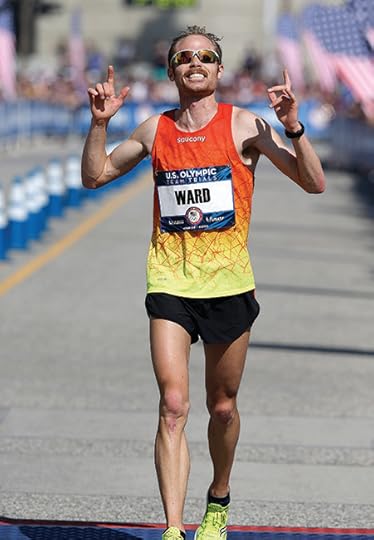
Jared Ward
27, Layton, Utah, 2:12:56 PR
Saucony, Coached by Ed Eyestone
Although he carries a much lower profile than his Olympic teammates, Ward has established himself as a hard-working bulldog of a competitor. He burst on the scene in 2014–2015, when he racked up three wins and two runner-up showings at U.S. championship races at distances from 20K to the marathon. He earned his Olympic spot with a third-place finish at the U.S. Olympic Trials on Feb. 13, running a few seconds off his PR on a very hot day.
Photo: Photorun.net
Related Galleries

Photos: Emma Coburn First U.S. Woman to Medal in Steeplechase
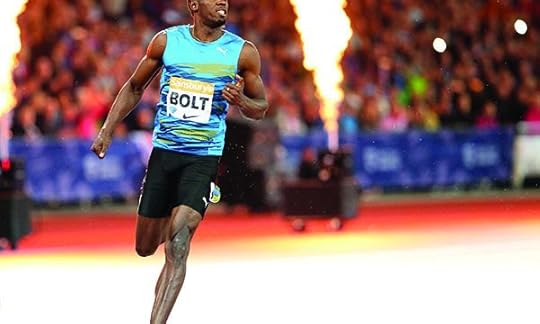
Top International Runners to Watch at the Rio Olympics

America’s Top Track & Field Olympic Medal Contenders
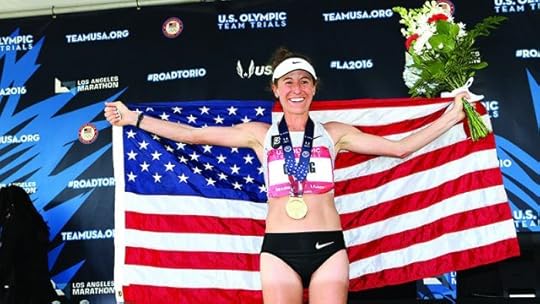
American Women to Watch in the Olympic Marathon

More Galleries
The post American Men to Watch in the Olympic Marathon appeared first on Competitor.com.
New & Improved: Changes Made for Oct. 8 Rock ‘n’ Roll Brooklyn Half Marathon

The 2016 Rock 'n' Roll Brooklyn Half Marathon will have a new start line in front of the Brooklyn Art Museum. Photo: Ryan Bethke
On any given day, running through Brooklyn can be a real treat. The famous New York City borough is full of incredible sights—from the gorgeous foliage throughout the borough’s Prospect Park to the stunning architectural gems in its brownstones that line its iconic streets. But on Oct. 8, running through Brooklyn will be better than ever with the Rock ‘n’ Roll Brooklyn Half Marathon, thanks to a new course and several other key improvements to the overall racing experience.
VIDEO: Watch a highlight video of the Rock ‘n’ Roll Brooklyn Half Marathon
Given some of the challenges participants experienced at the start last year, organizers immediately began working on changes that were needed to make this event even better, including adjustments to the pre-race experience before the starting gun sounds. The race’s start line will now be conveniently located outside the iconic Brooklyn Art Museum, and corrals will line up on Eastern Parkway, avoiding any congestion around the Grand Army Plaza area. Additional security screening checkpoint entrances have been added for a quicker and easier entrance into the corrals. And to minimize the stress of finding a bathroom before the start, additional porta pottys have been added in the start line village. Lastly, the gear check area has been moved closer to the start line on Flatbush Avenue near the library, for easy access to drop off items you’ll need post race.
Besides these key logistical improvements, the race has also undergone a slight course facelift. Course operations director Ted Metellus has been front and center with the new design and says the impetus for the change was to make the experience a better one for participants and their loved ones.
“We wanted to simplify the security screening process to the corrals at the start,” said Metellus, adding that the change was a win-win for everyone. “The NYPD and the Office of Special Events supported us, because the new course provides participants easy access to the start and gear drop.”
The key changes focus on the start and opening miles. Runners will line up next to the museum and then head out along the city’s tree-lined Eastern Parkway and then back on Kingston Avenue in the first two miles. Between the second and third mile, participants will make a left onto Washington Avenue and get some great visuals of the fall foliage in Prospect Park on their right.
Elevation is everyone’s friend at this point in the race. Runners will experience some nice descents at the start and right after the 2-mile mark (100-plus feet). By mile 3, Metellus says runners will be back on the 2015 course along Ocean Avenue filled with trademark NYC architecture of historic brownstones and beautiful apartment buildings. Elevation-wise, miles 4 to 8 are all about cruising on flat pavement and checking out the best parts of Brooklyn while jamming to entertainment along the sidelines.
The course begins to get challenging from mile 10 as runners turn into beautiful Prospect Park. A steep uphill awaits at mile 11, so runners should be sure to save “gas in the tank” for this final stretch, but the views of the park and the roar of the crowds near the finish line should help. The course flattens out in the final mile as a stunning finish line awaits everyone in the heart of one of New York City’s most charming green spaces.
“The Rock ‘n’ Roll Brooklyn Half Marathon course offers a little bit of everything in an urban course,” Metellus said. “It’s got its climbs and its descents. It has its straightaways and its turns. But during it all, you will be running down tree-lined streets and through a beautiful park.”
In addition to all the improvements this year, there are also a lot of great things from last year’s Rock ‘n’ Roll Brooklyn Half Marathon that will remain the same. This race is one of the only running events to exclusively shut down major streets and landmarks in New York City’s most populous borough, which means runners will get an intimate and exclusive experience as they bound through parts of the Big Apple.
More good news: even more entertainment and cheer squads will be along the course than last year. So if you’re considering Brooklyn, don’t hesitate.
Register: 2016 Rock ‘n’ Roll Brooklyn Half Marathon
The post New & Improved: Changes Made for Oct. 8 Rock ‘n’ Roll Brooklyn Half Marathon appeared first on Competitor.com.
Philly Mayor in Hot Water For Marathon Revenue ‘Slush Fund’

Philadelphia mayor Mayor Michael Nutter allegedly took trips to Rome and he and his staff dolled out unapproved grants, held open bar receptions and spent $52,000 on accommodations at the Philadelphia Marriott Courtyard from Sep. 15 to Oct. 3, 2015,according to review by the City Controller’s Office. Much of the money had come from revenue from the city-owned Philadelphia Marathon.
Philly.com reported today that more than $380,000 in revenue from the Philadelphia Marathon was used as a “slush fund” for unapproved expenditures, according to the internal review.
According to the story, the Mayor’s Fund is an non-profit that manages between $7 million to $10 million annually for various city programs that promote tourism, business and economic development, education, culture and job growth. Much of its revenue comes from the annual Philadelphia marathon. In 2014, $500,000 was set aside for grants, $200,000 of which was placed in the newly created marathon reserves account. In 2015, the fund spent nearly double what had been allocated for the marathon reserves account.
In 2016, Philadelphia’s Office of the City Representative and Department of Parks and Recreation announced a formal partnership to produce the Philadelphia Marathon. This year’s race weekend, which includes the marathon, plus a half marathon, 8K and fun run for kids, is slated for Nov. 18-20.
MORE: Philly.com
The post Philly Mayor in Hot Water For Marathon Revenue ‘Slush Fund’ appeared first on Competitor.com.
Workout of the Week: The Marathon Simulator

Photo: istockphoto.com
What26.2 kilometers (or 16.2 miles) at marathon goal pace run on a course that represents the race for which you are training. If an athlete is preparing for the hilly New York City Marathon, it is important to execute it on a similar course and not one that resembles, say, the flat Chicago Marathon. Some of the “magical” qualities of the simulation are lost if the right terrain can’t be located. Besides providing a significant effort run at goal pace, the idea of this workout is to let you visualize the course, develop a plan for racing and get a feel for what you want to do on race day.
How
Including warm-up and cool-down, this workout tops out around 20 miles, and therefore should be approached with caution. If an athlete is logging low mileage, attempting this workout is a flat-out bad idea. Runners should try this only if they are putting in at least 75-100 miles per week and also have a course on which to properly simulate the goal race.
When
The Simulator is generally done about four weeks prior to the goal marathon and is the first in a series of difficult workouts.
Excerpted with permission from Hansons Marathon Method, 2nd Edition
(Velo Press, 2016)
RELATED: 8 Weeks to a Fall Marathon Finish Line
The post Workout of the Week: The Marathon Simulator appeared first on Competitor.com.
Ryan Hall's Blog
- Ryan Hall's profile
- 21 followers



